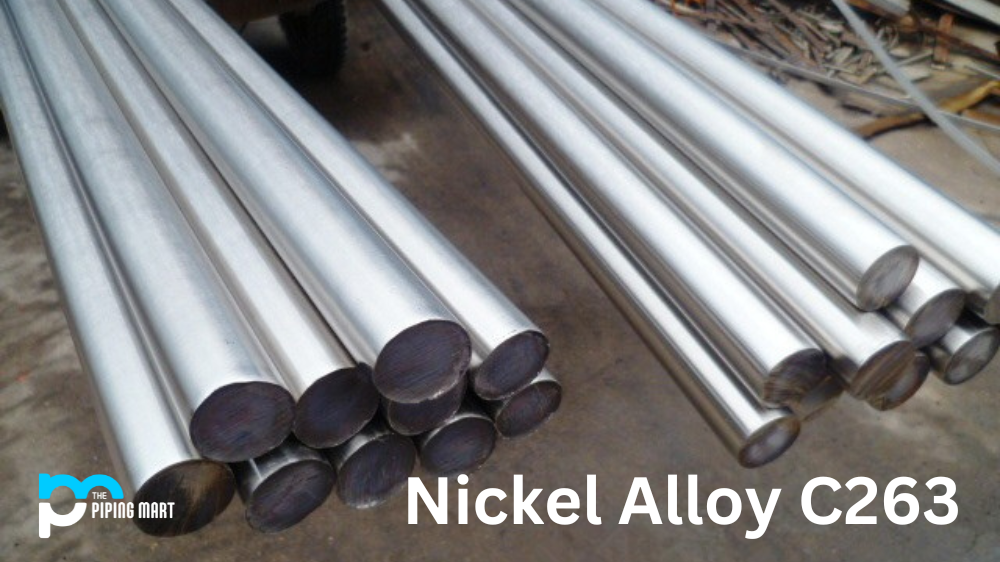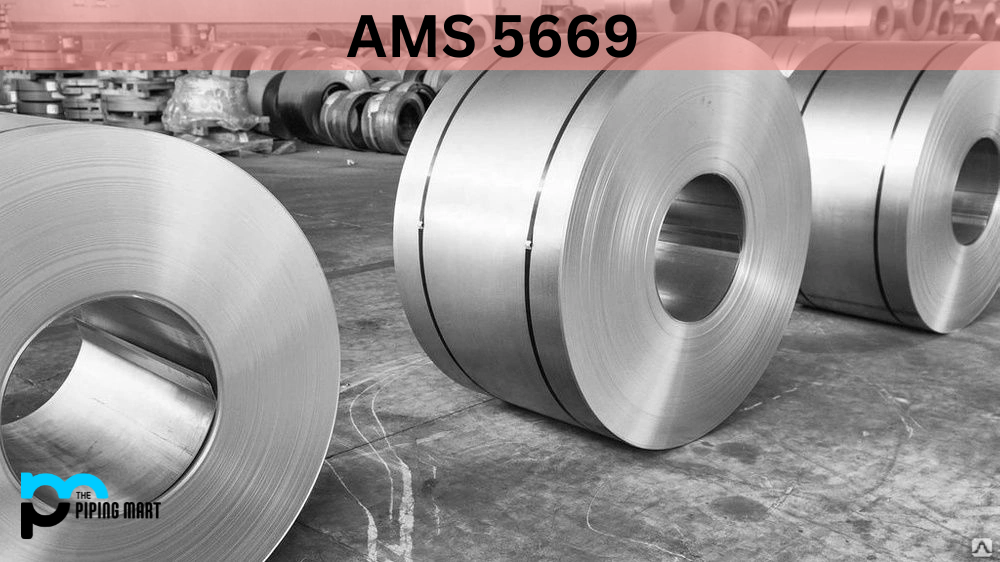Nickel Alloy C263 is a popular nickel-chromium-cobalt-molybdenum alloy with excellent mechanical strength and oxidation resistance. This superalloy can withstand high temperatures, making it ideal for aerospace, chemical processing, and power generation applications. In this blog post, we’ll dive into all the essential aspects of nickel alloy C263, including its composition, physical and mechanical properties, uses, hardness, heat treatment, welding, and resistance against corrosion.
Nickel Alloy C263 Composition
Nickel Alloy C263 comprises 19% of chromium, 20% of nickel, 6% of tungsten, 0.10% of carbon, 0.5% of silicon, 0.50% of manganese, 5.60% of cobalt, 0.02% of Sulphur, and 0.1% of phosphorus.
| Element | Content (%) |
|---|---|
| Chromium, Cr | 19-21 |
| Cobalt, Co | 19-21 |
| Molybdenum, Mo | 5.6-6.1 |
| Aluminum+Titanium, Al+Ti | 2.4-2.8 |
| Titanium, Ti | 1.9-2.4 |
| Iron, Fe | 0.7 |
| Manganese, Mn | 0.6 |
| Silicon, Si | 0.4 |
| Aluminum, Al | 0.3-0.6 |
| Copper, Cu | 0.2 |
| Phosphorus, P | 0.015 |
| Sulfur, S | 0.007 |
| Boron, B | 0.005 |
| Lead, Pb | 0.002 |
| Silver, Ag | 0.0005 |
| Bismuth, Bi | 0.0001 |
| Nickel, Ni | Balance |
Nickel Alloy C263 Physical Properties
Nickel Alloy C263 has an excellent combination of mechanical and physical properties. This superalloy has a density of 8.08 g/cm3 and a specific heat of 426 J/Kg-K. Additionally, it has a melting point of 1385°C, thermal conductivity of 11.6 W/(mK), and a coefficient of thermal expansion of 14.2×10−6/°C.
| Properties | Metric | Imperial |
|---|---|---|
| Density | 8.359 g/cm3 | 0.302 lb/in3 |
| Melting point | 1300-1335°C | 2372-2471°F |
Nickel Alloy C263 Mechanical Properties
The mechanical properties of nickel alloy C263 are impressive. It has a tensile strength of 930 MPa, which makes it ideal for high-stress applications. Its yield strength is 620 MPa, and its elongation capacity is 20%. Additionally, it has a modulus of elasticity of 203 GPa, which defines its ability to withstand deformation without breaking.
| Properties | Metric | Imperial |
|---|---|---|
| Tensile strength (annealed) | 344.74 MPa | 50000 psi |
| Yield strength (annealed) | 90.321 MPa | 13100 psi |
| Elongation at break (annealed) | 45% | 45% |
Nickel Alloy C263 Thermal Properties
| Properties | Metric | Imperial |
|---|---|---|
| Thermal expansion co-efficient (@204.4°C/400°F) | 12.06 µm/m°C | 6.7 µin/in°F |
Nickel Alloy C263 Equivalents
- AMS 5872
- AMS 5966
- AMS 5872E
- EN 2.4650
- GE B50A783
- GE B50A771
- RR 9500/16
- Werkstoff 2.4650
Nickel Alloy C263 Uses
Nickel Alloy C263 is a popular superalloy used in many applications. These include aerospace industry components such as jet engine blades, vanes, combustion cans, and seals. It is also used in the chemical processing industry for reactor vessels, sour gas wells, and heat exchangers due to its excellent corrosion resistance properties. Furthermore, the nuclear industry uses nickel alloy C263 for nuclear reactor components, such as control rods and steam generators.
Nickel Alloy C263 Hardness
Nickel alloy C263 has a Rockwell hardness level of C30, categorising it within the moderately complex range. Its high tensile strength and yield strength rating make it ideal for applications requiring high hardness levels.
Nickel Alloy C263 Heat Treatment
Nickel alloy C263 requires a specific heat treatment process to enhance its mechanical properties further. The alloy requires heating up to a particular temperature range of 1039 – 1089 degrees Celsius and then quenching in water to achieve the desired results. The heat treatment process ensures the alloy has an optimal balance between strength and ductility.
Nickel Alloy C263 Welding
Nickel Alloy C263 is weldable through various methods such as gas-tungsten arc welding (GTAW), shielded metal arc welding (SMAW), gas-metal arc welding (GMAW), and submerged arc welding (SAW). The process requires strict adherence to the manufacturer’s recommendations to ensure the successful joining of the superalloy.
Nickel Alloy C263 Corrosion-Resistant
Nickel Alloy C263 possesses excellent corrosion resistance properties. It is resistant to stress corrosion cracking in chloride-rich environments, making it ideal for applications in harsh chemical processing environments. Additionally, its resistance to oxidation in high-temperature applications further enhances its corrosion resistance properties.
Conclusion
In summary, nickel Alloy C263 is a valuable superalloy. Its excellent mechanical strength, oxidation resistance and high-temperature capabilities have seen increased use in various applications, including aerospace, chemical processing, and nuclear industries. It’s vital to understand its composition, physical and mechanical properties, uses, hardness, heat treatment, welding, and resistance against corrosion to ensure its optimal use in various applications. As such, Nickel Alloy C263 remains a vital component in engineering applications, increasingly relied upon in a broad array of industries.




